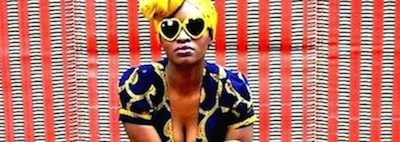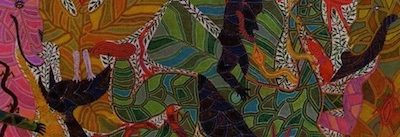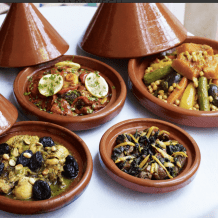
The Moroccan Contemporary Art Scene, post-independence, is much sought after and has gained popularity over the recent years given its varied mix of forward thinking and experimental painters, sculptors, fashion designers, and craftsmen. Morocco’s contemporary art scene had a boost with the opening of some significant public-funded and private galleries as well as some key exhibitions showcasing Moroccan modern art abroad. Although foreign and diaspora collectors have always been important, Nadia Echiguer, Director of UK-based art dealers, Moroccan Fine Art, explains the role of a developing economy in the promotion and sale of contemporary artwork in Morocco itself. “Before, only private and public institutions were buying artworks. The trend has changed as private Moroccan collectors are showing a keen interest in art,” thanks to a booming economy that has seen an increase in the size and the wealth of the Moroccan middle class.

Reflecting the increasing domestic interest in contemporary art, two large projects opened in Rabat and Marrakech. The MMVI Mohammed VI Museum of Modern and Contemporary Art opened in Rabat, in October 2014 with an exhibition of over 400 works by more than 150 Moroccan artists, entitled “1914-2014: One hundred years of creation.” Over in Marrakech, seen by many as a more creative centre compared to Rabat, the Marrakech Museum for Photography and Visual Arts (MMP+) opened in September 2013 in temporary accommodation at the Badii Palace. A purpose-built venue designed by British architect Sir David Chipperfield is due to open in 2016, the same year as the 6th Marrakech Biennale (24 February – 8 May 2016).

Following Moroccan independence in 1956, many artists and intellectuals sought to claim a modern Moroccan cultural identity to banish the euro-centrism of the French colonial power or an orientalist over-emphasis on the naive or folkloric aspects of Moroccan art. At the same time, many artists could not and would not deny the influence of these more traditional arts and crafts on their work. As the swinging 60s drew on into the 1970s, despite the former colonial experience, there was much intellectual and artistic interchange between Morocco and Europe, in particular France. In addition, Moroccan artists exchanged ideas and philosophies with visiting Beat Poets (for example, in Tangiers) and international musicians and artists who passed through the country (including the Rolling Stones, Jimi Hendrix and others). Slowly, however, Moroccan artists developed an “exploratory intuition” according to Moroccan philosopher El Jabri and a “modernity” in the Moroccan artistic experience was born.

During the 1980s, these issues of collective identity became less evident as Moroccan artists gained the confidence to forge their own styles and open their horizons beyond questions of a Moroccan or Arab style. At the same time, they left behind occidental models and themes and began to explore their creativity as individuals. This desire to carve one’s own niche as an artist, one who happens to be Moroccan, characterized strongly the closing decades of the 20th century.
Today, at the start of the 21st century, many young Moroccan artists are experimenting with new twists on old techniques and traditions against the backdrop of greater use of modern communications technology. Key themes in this era reflect the realities of modern life for young Moroccans: immigration, globalization, urbanization and the cultural references of the past.
The Moroccan art scene has a number of key creative centers. Many artists have emerged from the large conurbations of Casablanca or Marrakech or the traditional heartland of Moroccan crafts, Fes. However, Tetouan – with its Institute of Fine Arts – and Essaouira – with its nexus of auto-didactic artists are two particular poles.





